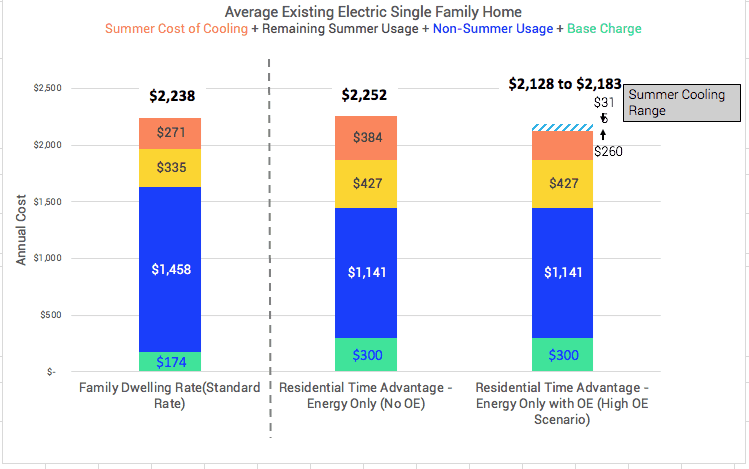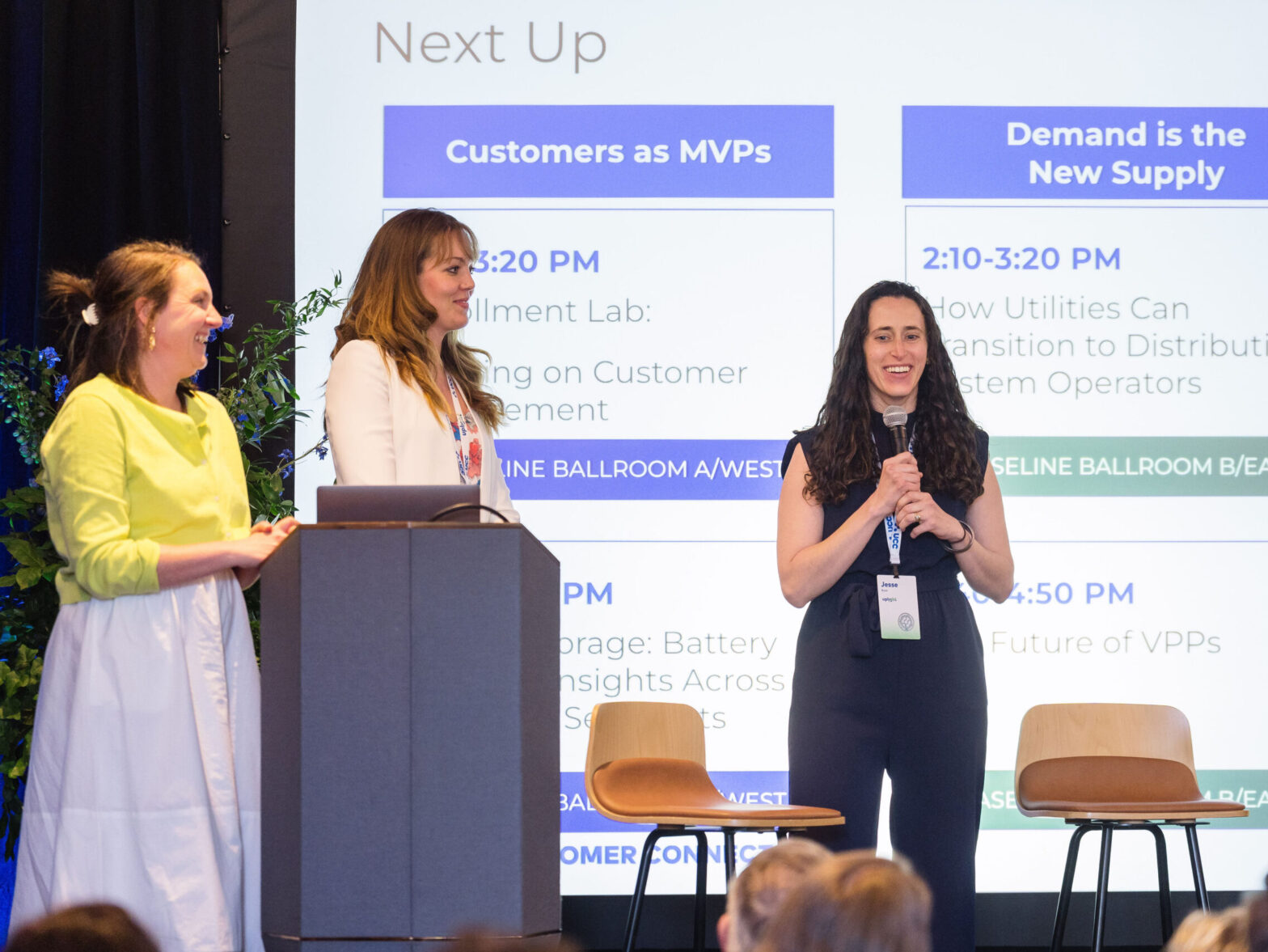The adoption of time-varying rates for residential electric customers is increasing as a result of the large-scale deployment of Advanced Metering Infrastructure (AMI). One of the key drivers of this adoption is the need to reduce peak demand to reduce operating costs, meet emission mitigation commitments, and align with societal pressures to address climate change. One of the barriers to wider-scale adoption of time-of-use (TOU) rates is the potential negative financial impacts to some customers.
By looking at the design of TOU rates, the characteristics of the areas where they are implemented (such as heating type, climate, and housing stock) and other technologies paired with it, we can start to see the impacts on various types of customers. It’s critical to get the rate structure right so it is effective for the customers it was designed for and increased customer costs are minimized to the outliers.
Keeping the Annual Costs Consistent For TOU Rates
Many utilities across the country are getting TOU rates approved by ensuring that customers will have roughly the same annual cost on their new rate as they did on their old rate. Utilities can do this in two basic ways. One is to price off-peak hours at a low enough rate so that the savings in those hours make up for the cost incurred during the on-peak hours. The second method is to have non-peak season rates (generally winter) lower to make up for the higher incurred customer costs during the on-peak season (generally summer). The climate, typical heating types, and typical housing stock should all be used to determine the appropriate structures and rates in each tier.
To help ensure that customers are able to effectively transition to new rates, utilities need to ensure they follow best practice in empathizing, educating and empowering customers. A key component of empowering customers and helping to ensure they aren’t negatively impacted by new rates is to offer smart thermostats and encourage customers to enroll in a demand management program as part of the transition. Regardless of the type of TOU rate structure the utility implements, a demand management program can help customers save more money–all while removing the stress of a customer for when the off- and on-peak times are. Additionally, a utility can factor in peak period revenue reductions to a higher degree of accuracy so they can better project what rates they need to charge to ensure that their earnings are still the same without the need of another rate adjustment.
A Tale of Four Homes on a Standard Rate, a TOU Rate, and a TOU Rate With Orchestrated Energy
We looked at the typical hourly load over the course of a year of a US utility for four different home types as well as their standard rate, TOU rate, and if they were to offer Uplight’s demand management solution, Orchestrated Energy, to those TOU customers – determining how much each customer would spend under each scenario. We found that a new electric-heated home on the utility’s TOU rate enrolled in Orchestrated Energy would save the most money over the course of a year. Fortunately, existing electric heated homes also would save a sizeable amount of money over the course of a year. You can see this in the table below where the anticipated bill savings of an existing electric home is $81.67, and the savings for a new home is $200.50.

Gas Heated Homes Negatively Impacted
The home types that spent substantially more money on their electric bills compared to the standard rate were both new and existing gas heated homes. For TOU rates, utilities aim to keep an average customer’s total annual cost roughly the same. Utilities that are summer peaking often have lower supply costs in winter and in turn can offer lower winter rates to TOU customers to keep their annual electricity costs roughly the same. However, if a household has gas heating, they can’t access these savings.
This shows the need of designing TOU rates appropriately as to not inadvertently negatively impact certain customer segments. With this particular TOU rate, adding a demand management program substantially decreased the yearly costs of customers in all of the home types above and beyond what they would have paid if they were only on the TOU rate. This will also be true with other TOU rate designs such as total summer period costs being kept roughly the same opposed to having a winter period make up for the high summer rates.
How Did We Get There?
Table 1 was derived by calculating out the summer costs of cooling, non-cooling summer costs, and non-summer costs for each of the home types by using typical hourly usage data for a full year, hourly weather data, typical HVAC duty cycle, and Orchestrated Energy performance. These totals for a typical existing electric single family home are shown below. You can see a customer on a TOU rate spends slightly more over the course of a year while a customer on a TOU rate enrolled in Orchestrated Energy saves money over the course of a year.

High Base Charges Show The Need for Good Rate Design
Additionally in Table 2 above, you can see that a customer would save substantially more if the base charge wasn’t so much higher for the TOU rate compared to the standard rate. This further increases the need for adequate TOU rate design because the high base charge, which is unavoidable, degrades the cost effectiveness of the TOU rate or TOU rate plus Orchestrated Energy.
The Solution: Add Demand Management to TOU Rate Offerings
This analysis shows that whether you’re designing a new TOU rate or expanding enrollment in an existing one, a smart thermostat demand management solution, or other technologies such a hot water heaters, should be offered to customers along with it. This takes the guesswork out of the new rate for customers as utilities optimize comfort and energy usage based on the new plan–reducing the potential negative impacts to customers as a whole, but also to the outliers from who the TOU rate was specifically designed for. The outliers in this example are the gas customers but they can be low income customers who don’t have the same insulation as newer, more expensive home. Additionally, by offering tools for customers to manage their usage when on a TOU rate, utilities will be more likely to gain the approval of regulators as they are looking out for the customers that could be negatively impacted by a utility rate or program, particularly if it’s one they haven’t chosen on their own to participate in. So when looking at rolling TOU rates out to customers, also look at how customer demand management solutions can help.




